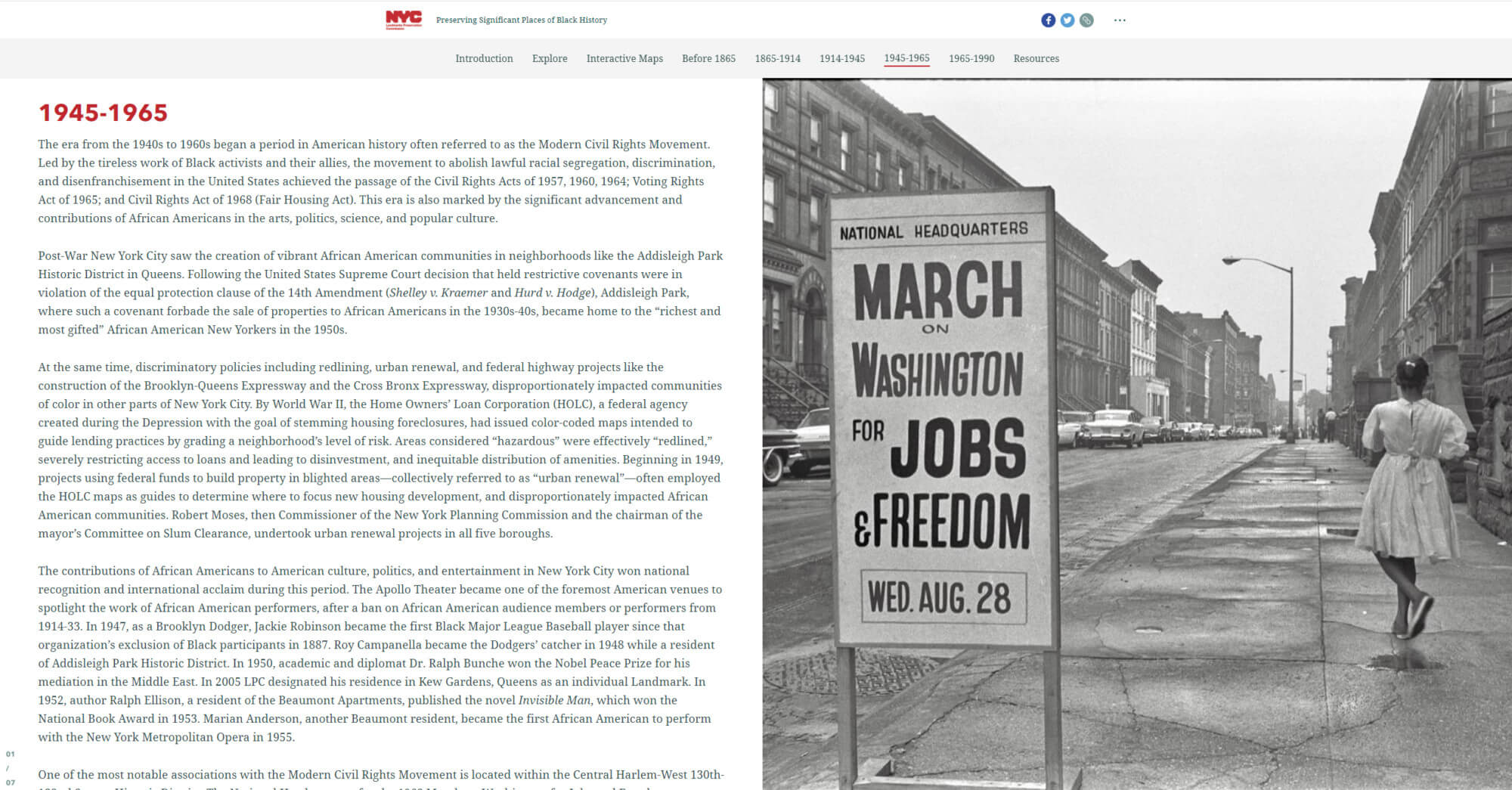New York City’s Landmarks Preservation Commission (LPC) has followed up its 2019 New York City and the Path to Freedom explorable story map just in time for Black History Month. Today, the commission released Preserving Significant Places of Black History, an interactive survey of historic and cultural African American landmarks throughout New York over the last 150 years and beyond.
“LPC recognizes the critically important contributions of African Americans and is committed to telling the complete story of New York City’s African American heritage,” wrote current LPC chair, Sarah Carroll, in a press release. “With this story map, our goal is to provide greater accessibility to New York City landmarks and historic districts that reflect the contributions and achievements of African Americans, and illustrate that the fight for racial equity and social justice is as relevant today as it has been over the course of the City’s history.”
Preserving Significant Places of Black History is broken into two sections. The first is an interactive map of landmarked and residential, religious, commercial, and community buildings (and districts) important to the Black experience in New York, broken down and filterable both by the landmark’s date (ranging all the way back to pre-Civil War), as well as when the item was landmarked by the LPC.
The commission noted that the new map highlights 75 unique items and 33 historic districts recognized by the LPC since its formation in 1965, including the “homes of significant individuals, such as Langston Hughes, James Baldwin, Ralph Bunche, and Shirley Chisholm,” the Apollo Theater, and sites associated with the Civil Rights movement and movement of freed slaves in the 19th century (which are becoming increasingly endangered across America).
The second component is a timeline and brief readers of the African American experience in New York, from pre-1865, to Reconstruction, to the Civil Rights era, to the 1990s. The LPC has also compiled a list of books and web resources for those looking to dig even deeper.
Perhaps not coincidentally, this month also marked the landmarking of the Harriet and Thomas Truesdell Home in Downtown Brooklyn, owned by abolitionists who may have used the home as a stopping point for the Underground Railroad to help escaped slaves evade recapture. The building’s landmark status came only after a 15-year battle by local activists.
